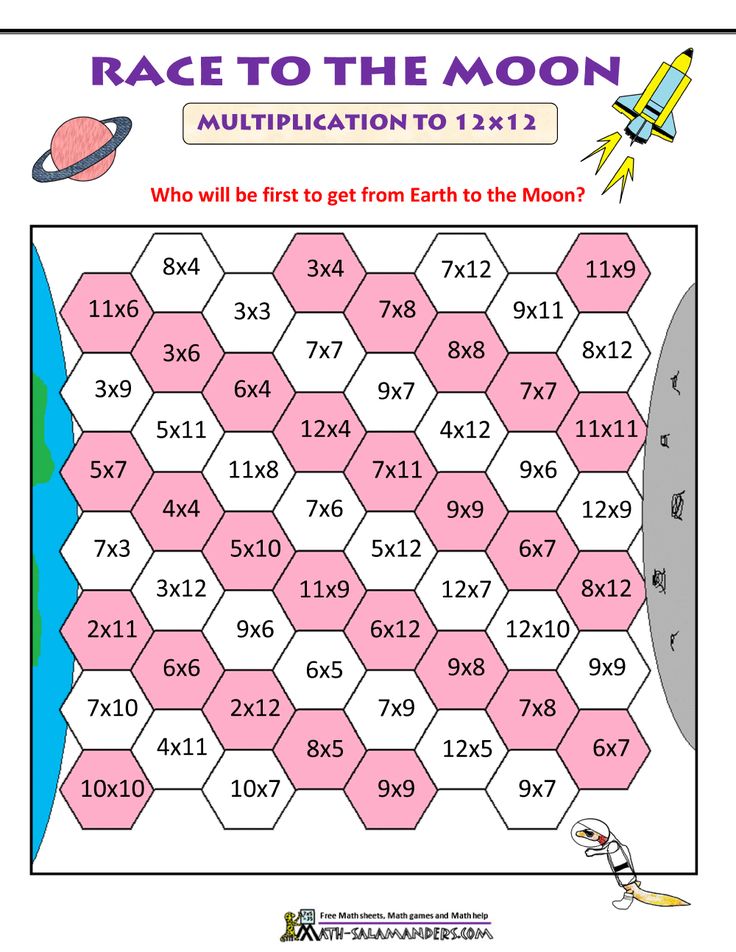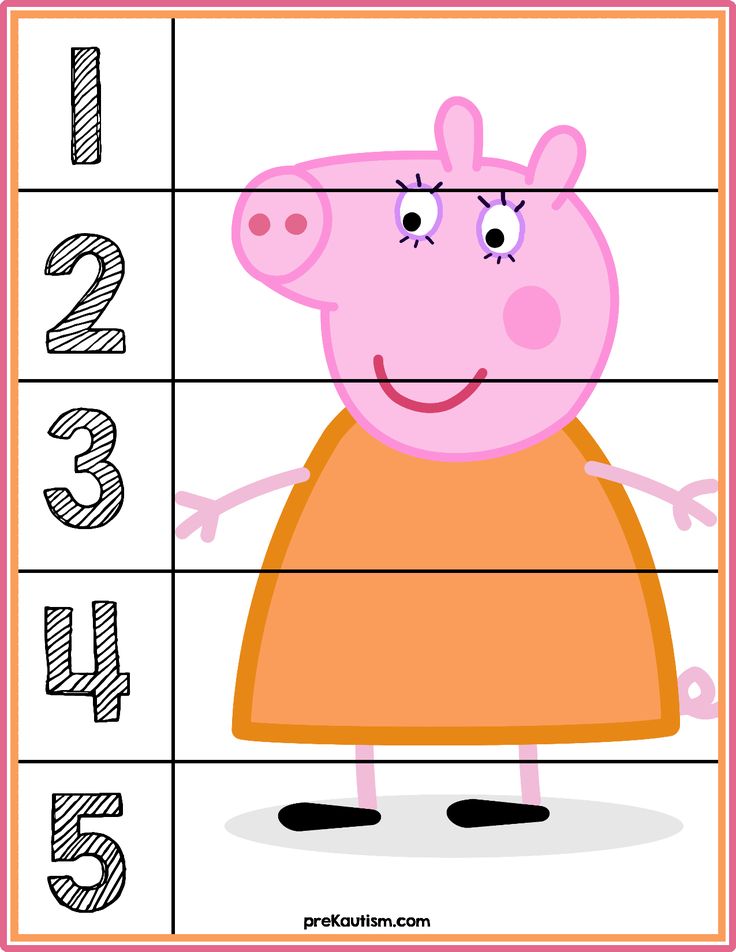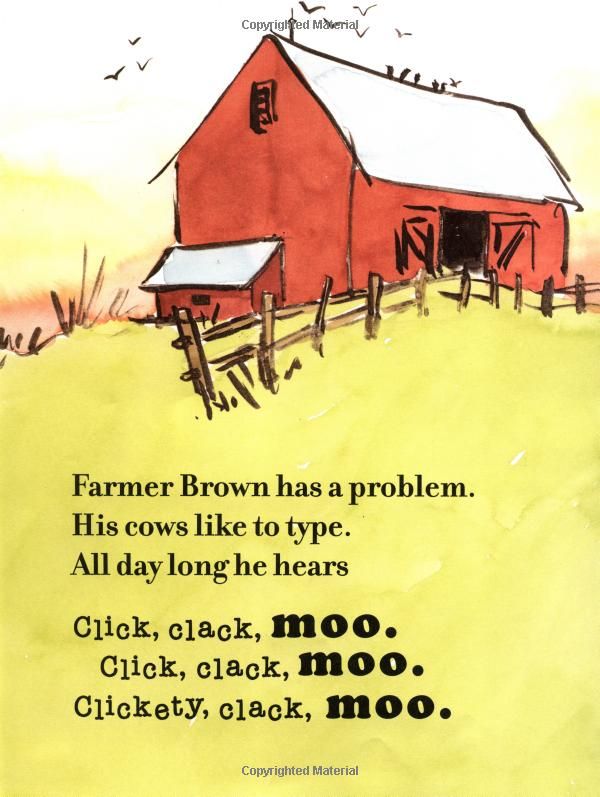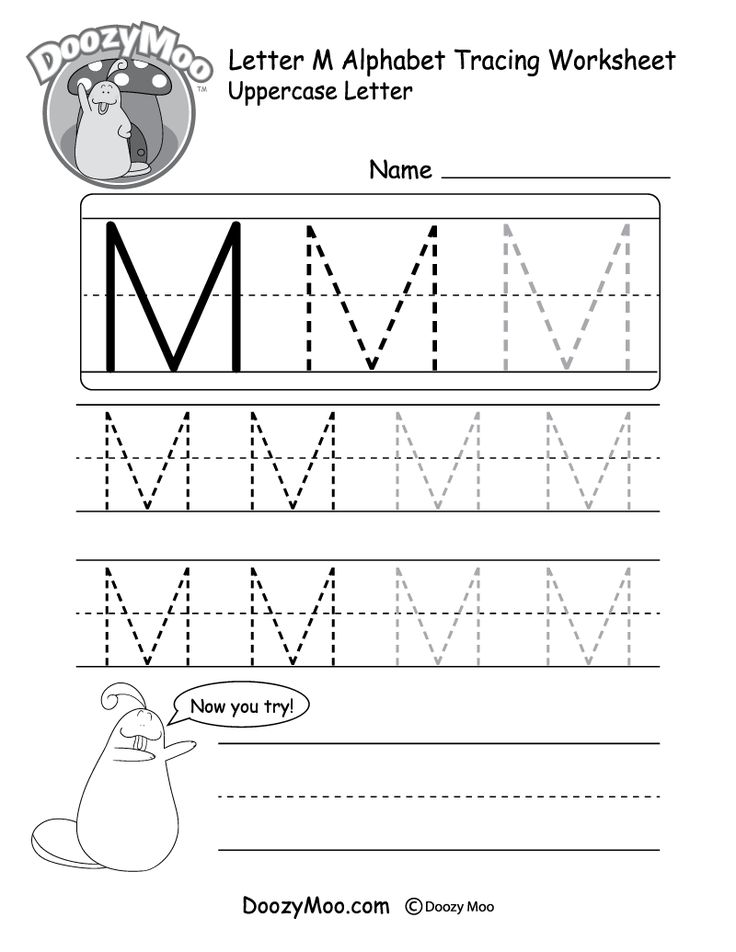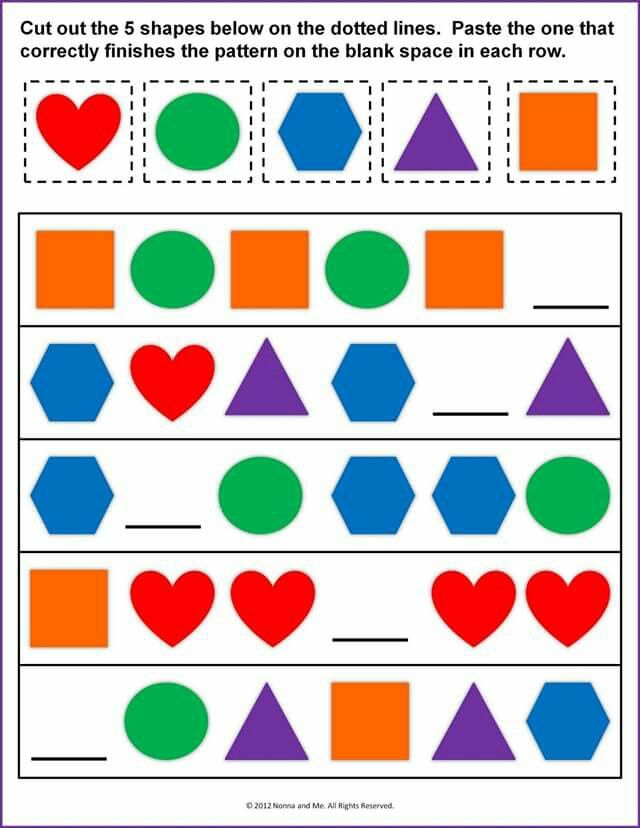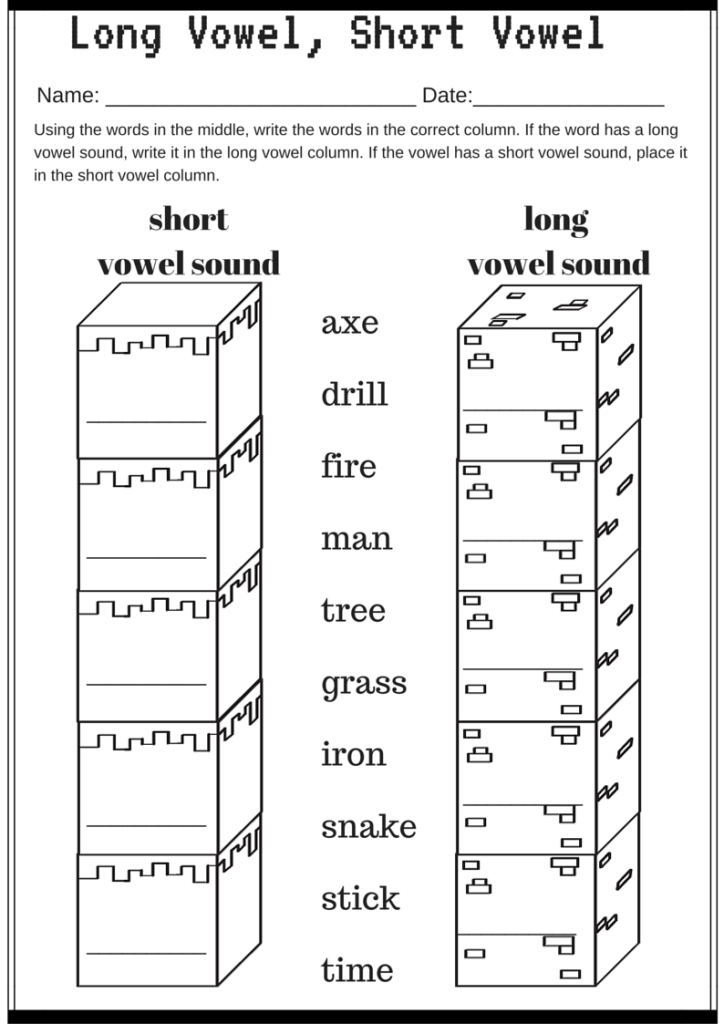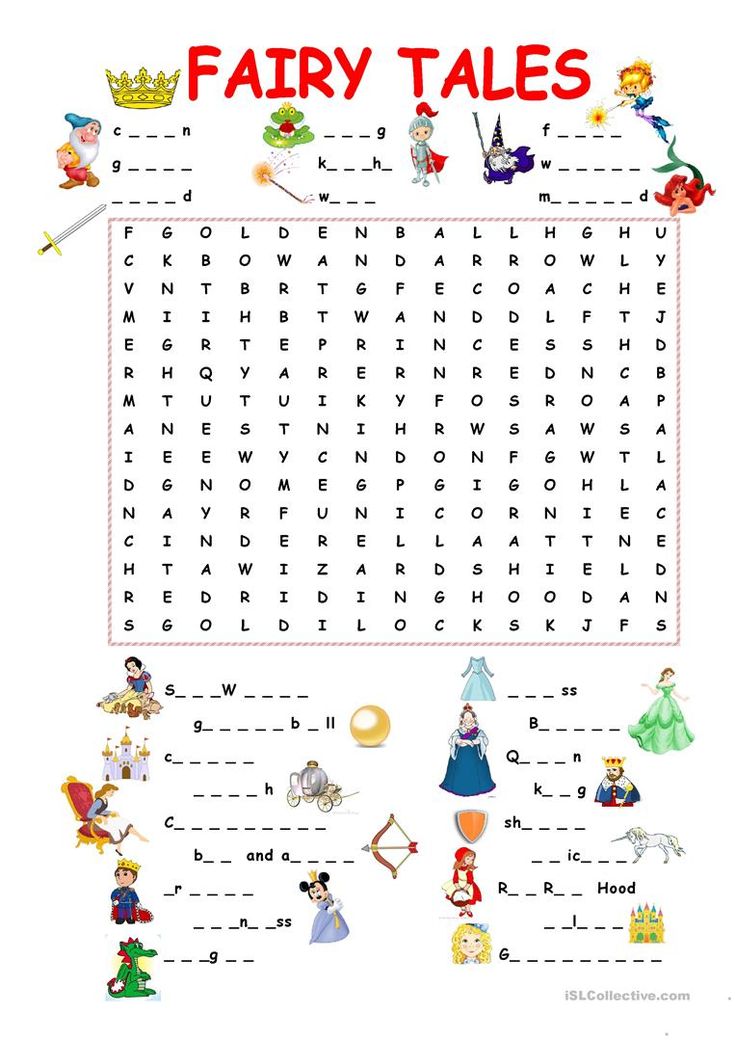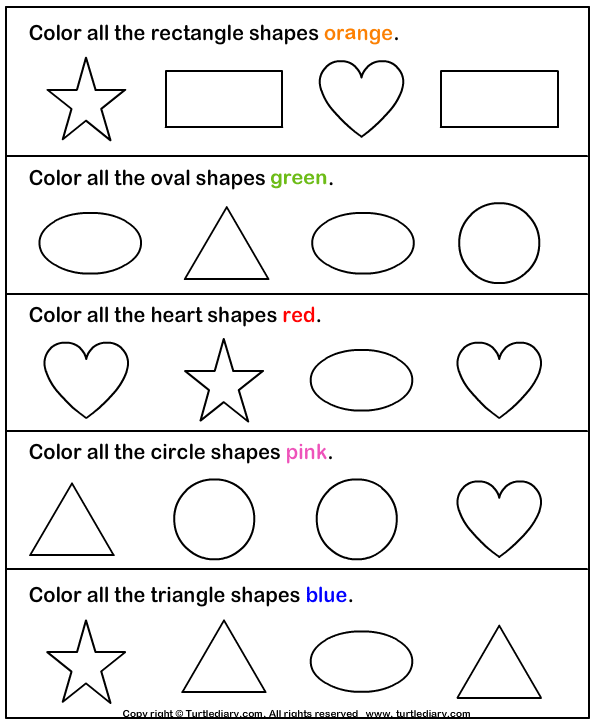Activities for learning shapes
25 Creative Activities and Ideas For Learning Shapes
Learning shapes is one of the earliest concepts we teach kids. This readies them for geometry in the years ahead, but it’s also an important skill for learning how to write and draw. We’ve rounded up our favorite activities for learning shapes, both 2-D and 3-D. They all work well in the classroom or at home.
1. Start with an anchor chart
Colorful anchor charts like these are terrific reference tools for kids learning shapes. Have kids help you come up with examples for each one.
Learn more: A Spoonful of Learning/Kindergarten Kindergarten
2. Sort items by shape
Collect items from around the classroom or house, then sort them by their shapes. This is a fun way for kids to realize that the world around them is full of circles, squares, triangles, and more.
Learn more: Busy Toddler/Shape-Sorting
3. Snack on some shapes
Everyone loves a learning activity you can eat! Some food items are already the perfect shape; for others, you’ll have to get a little creative.
ADVERTISEMENT
Learn more: Chieu Anh Urban
4. Print with shape blocks
Grab your shape blocks and some washable paint, then stamp shapes to form a design or picture.
Learn more: Pocket of Preschool
5. Go on a shape hunt
These “magnifying glasses” make an adventure of learning shapes! Tip: Laminate them for long-term use.
Learn more: Nurture Store UK
6. Hop along a shape maze
Use sidewalk chalk to lay out a shape maze on the playground or driveway. Choose a shape and hop from one to the next, or call out a different shape for every jump!
Learn more: Creative Family Fun
7. Assemble a truck from shapes
Cut out a variety of shapes (excellent scissors skills practice!), then assemble a series of trucks and other vehicles.
Learn more: Little Family Fun
8.
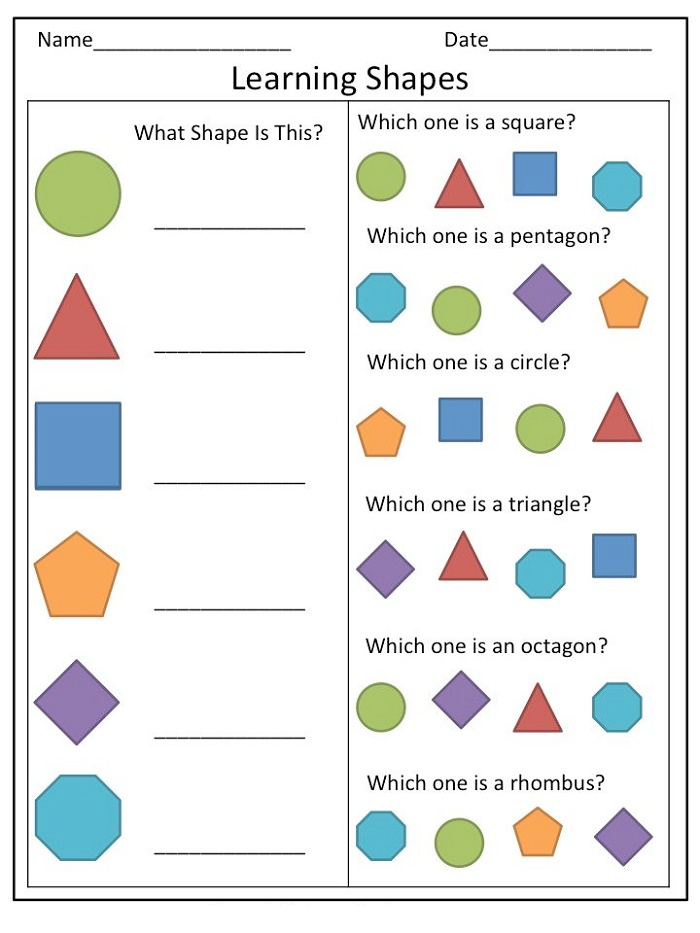 Stretch out shapes on geoboards
Stretch out shapes on geoboards
Teachers and kids love geoboards, and they’re a great tool for learning shapes. Give students example cards to follow, or ask them to figure out the method on their own.
Learn more: Mrs. Jones’ Creation Station
9. Drive on shaped roads
Use these free printable road mats to work on shapes. Bonus: Make your own road shapes from sentence strips!
Learn more: PK Preschool Mom
10. Find shapes in nature
Take your shape hunt outside and look for circles, rectangles, and more in nature. For another fun activity, gather items and use them to make shapes too.
Learn more: Nurture Store UK
11. Put together craft stick shapes
Add Velcro dots to the ends of wood craft sticks for quick and easy math toys. Write the names of each shape on the sticks for a self-correcting center activity.
Learn more: Surviving a Teacher’s Salary
12.
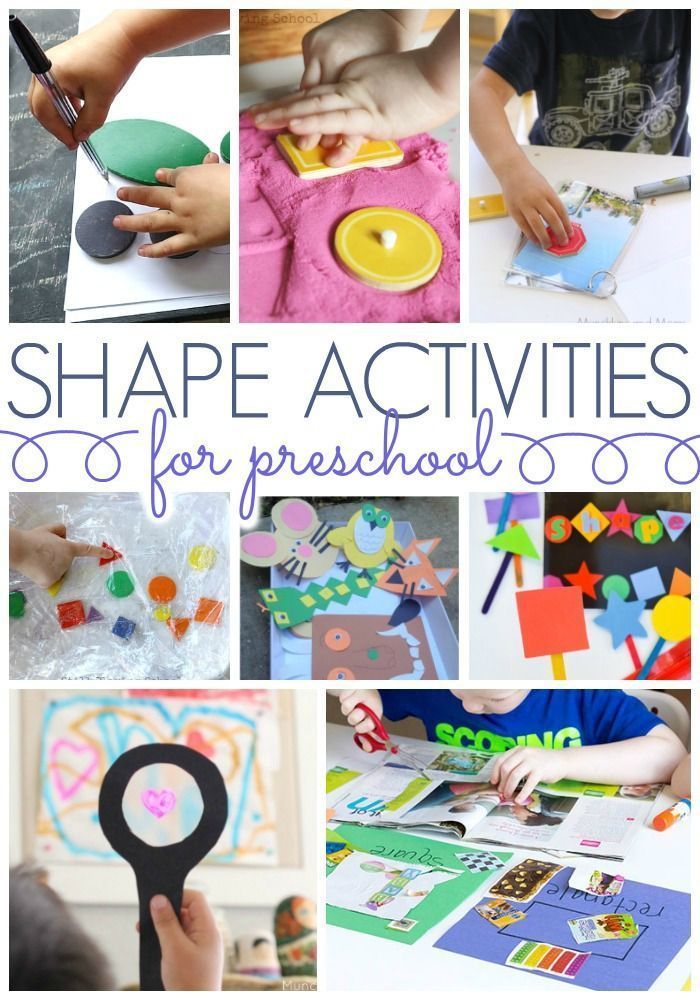 Blow 3-D shape bubbles
Blow 3-D shape bubblesThis is a STEM activity that’s sure to fascinate everyone. Make 3-D shapes from straws and pipe cleaners, then dip them in a bubble solution to create tensile bubbles. So cool!
Learn more: Babble Dabble Do
13. Prep a shape pizza
Cover a paper plate “pizza” with lots of shape toppings, then count the number of each. Simple, but lots of fun and very effective.
Learn more: Mrs. Thompson’s Treasures
14. Construct shapes from toothpicks and Play-Doh
This is an excellent STEM challenge: how many shapes can you make using toothpicks and Play-Doh? Marshmallows work well for this activity too.
Learn more: Childhood 101
15. Outline shapes with stickers
Kids adore stickers, so they’ll enjoy filling in the outlines of the shapes they’re learning. They won’t realize it, but this gives them fine motor skills practice too!
Learn more: Busy Toddler/Sticker Shapes
16.
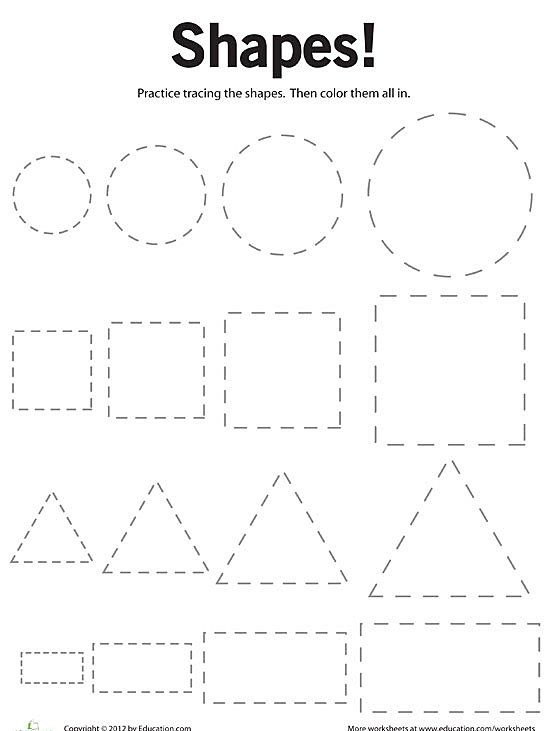 Lace shapes
Lace shapesLacing cards have long been a classic, but we really like this version that uses drinking straws. Just cut them into pieces and glue them along the edges of the cards.
Learn more: Planning Playtime
17. Make shapes with LEGO bricks
LEGO math is always a winner! This activity also makes a good STEM challenge. Can your students figure out how to make a circle from straight-sided blocks?
Learn more: Pocket of Preschool
18. Categorize shapes by their attributes
Work on geometry terms like “sides” and “vertices” when you sort shapes using these attributes. Start by placing shapes into paper bags and asking students questions like, “The shape in this bag has 4 sides. What could it be?”
Learn more: Susan Jones Teaching
19. Count and graph shapes
These free printable worksheets challenge kids to identify shapes, then count and graph them. Lots of math skills, all in one!
Learn more: Playdough to Plato
20.
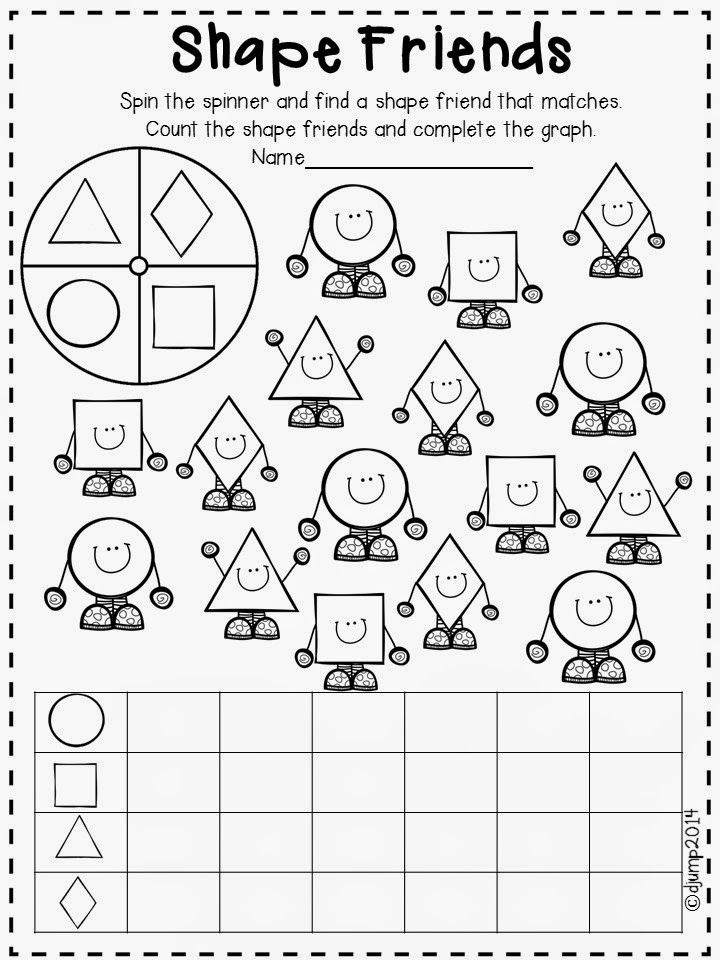 Create a shape monster
Create a shape monsterAdd arms, legs, and faces to create cheery (or scary) shape monsters! These make for a fun classroom display.
Learn more: Fantastic Fun and Learning
21. Sift through rice for shapes
Sure, kids can identify their shapes by sight, but what about by touch? Bury blocks in a bowl of rice or sand, then have kids dig them out and guess the shape without seeing them first.
Learn more: Fun With Mama
22. Craft an ice cream cone
Ice cream cones are made up of several shapes. Encourage kids to see how many different ways they can make a sphere of “ice cream.”
Learn more: Extremely Good Parenting
23. Ask “What does the shape say?”
If you don’t mind the risk of getting that song stuck in your kids’ heads, this is such a neat way to combine writing and math.
Learn more: Around the Kampfire
24. Piece together shape puzzles
Use wood craft sticks to make simple puzzles for kids who are learning their shapes.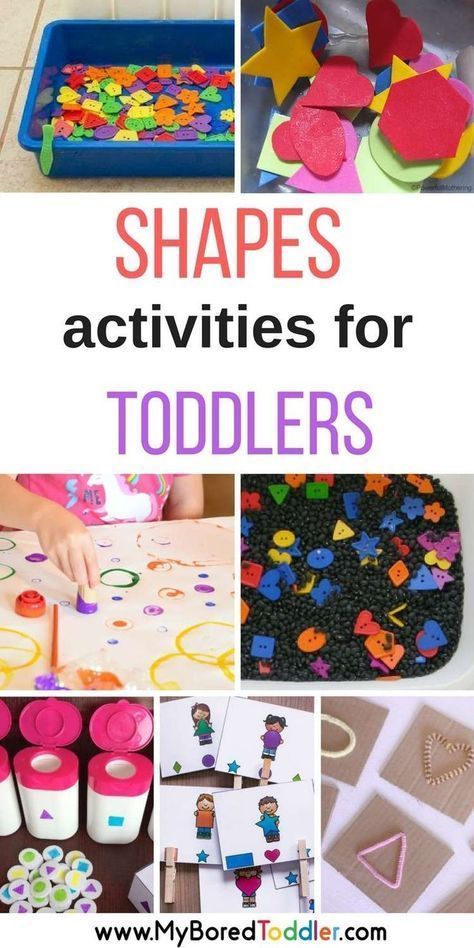 These are inexpensive enough that you can make full sets for each of your students.
These are inexpensive enough that you can make full sets for each of your students.
Learn more: Toddler at Play
25. Feed a shape monster
Turn paper bags into shape-eating monsters, then let kids fill their hungry bellies!
Learn more: Teach Pre-K
From teaching shapes to long division and everything in between, these are the 25 Must-Have Elementary Classroom Math Supplies You Can Count On.
Plus, 22 Active Math Games and Activities For Kids Who Love to Move.
27 Amazing Activities for Learning Shapes
Learning shapes is an early and important teaching concept. This is a terrific way to introduce children to problem-solving skills and pattern recognition. The learning of shapes prepares students for future math courses such as geometry. Check out these 27 amazing ideas for learning shapes!
1. Box of Chocolates
Create your very own box of chocolates with a variety of shapes.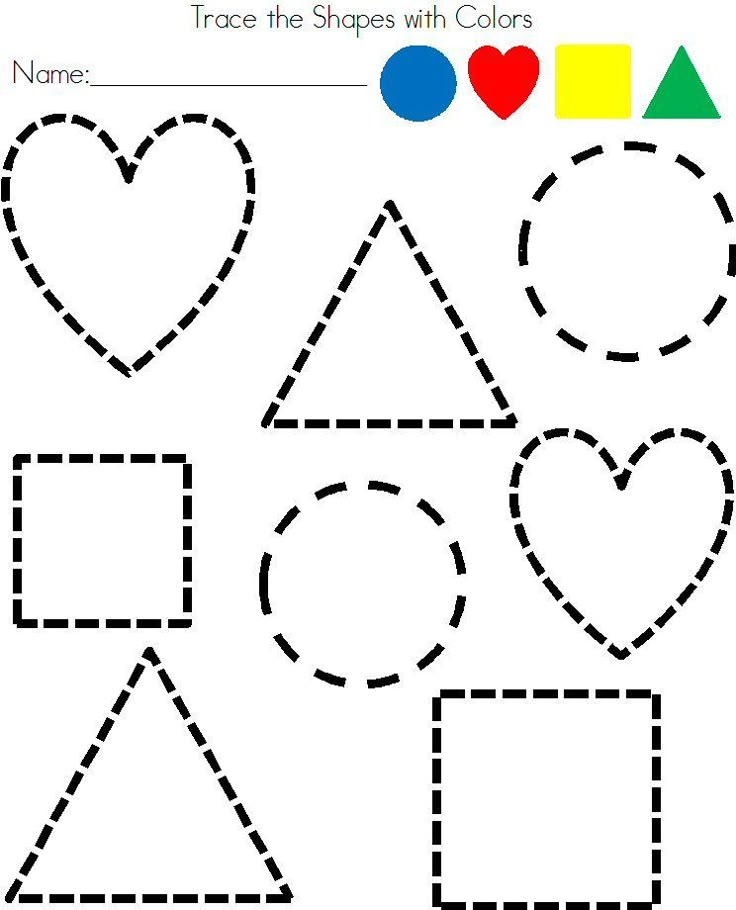 Use a stencil to cut shapes from foam board. Draw basic shapes inside a heart drawing to represent a box of Valentine’s chocolates. Students will match the foam shapes to the drawings. This is a super activity for Valentine’s Day!
Use a stencil to cut shapes from foam board. Draw basic shapes inside a heart drawing to represent a box of Valentine’s chocolates. Students will match the foam shapes to the drawings. This is a super activity for Valentine’s Day!
Learn more: Active Littles
2. Shape Bingo
Shape Bingo is a great idea for 3D shape practice! This fun activity is free and can be used in the classroom with the entire group or for classroom learning centers.
Learn more: 123 Homeschool 4 Me
3. Beanbag Shape Hop and Toss
For this engaging activity, use painter's tape to create outlines of shapes on the floor. Have your children hop from shape to shape. You can have them say the name of the shape once they hop into it. They can also throw beanbags into the shapes for more fun.
Learn more: Learn Play Imagine
4. Edible Shapes: Tic-Tac-Toe Cookies
Kids will absolutely love this shape activity.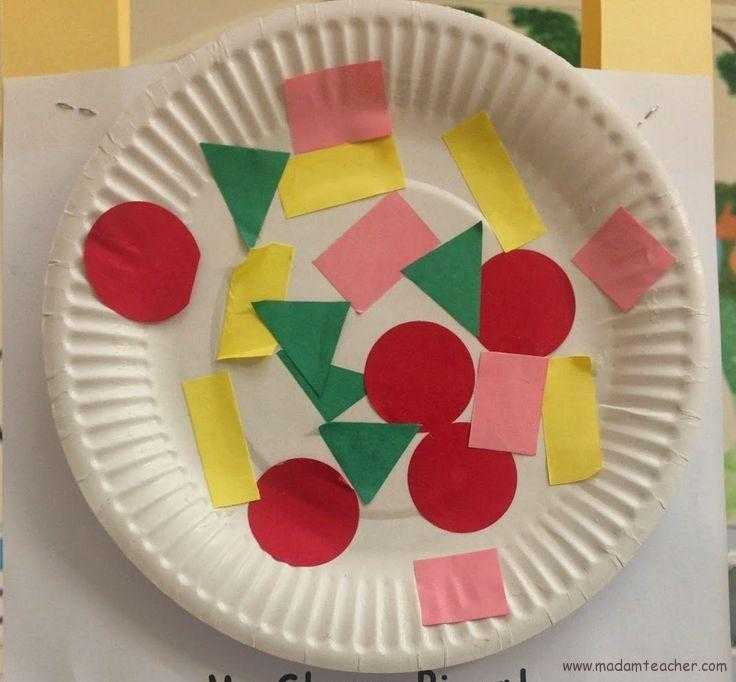 They will get to help make chocolate chip cookies shaped like X's and O's. Once they finish playing a few rounds of tic-tac-toe, they will have the opportunity to eat the delicious cookies!
They will get to help make chocolate chip cookies shaped like X's and O's. Once they finish playing a few rounds of tic-tac-toe, they will have the opportunity to eat the delicious cookies!
Learn more: The Realistic Mama
5. Shapes Sorting Suncatcher
This is a favorite shape sorter for 2 to 3-year-old children. You will need contact paper, scrapbook paper, and felt or foam shape pieces. You can make or own or purchase them.
Learn more: Happy to Shelf
6. Snowman Shape Matching
Children love building snowmen, so they will have a blast with this free snowman-themed activity! Kids will learn about shapes as they match each snowman's head to its same shaped body.
Learn more: Tot Schooling
7. Shape Art
Cut out several shapes and create a piece of art as a classroom example. Next, give each student a stack of the same shapes and have them create the same masterpiece.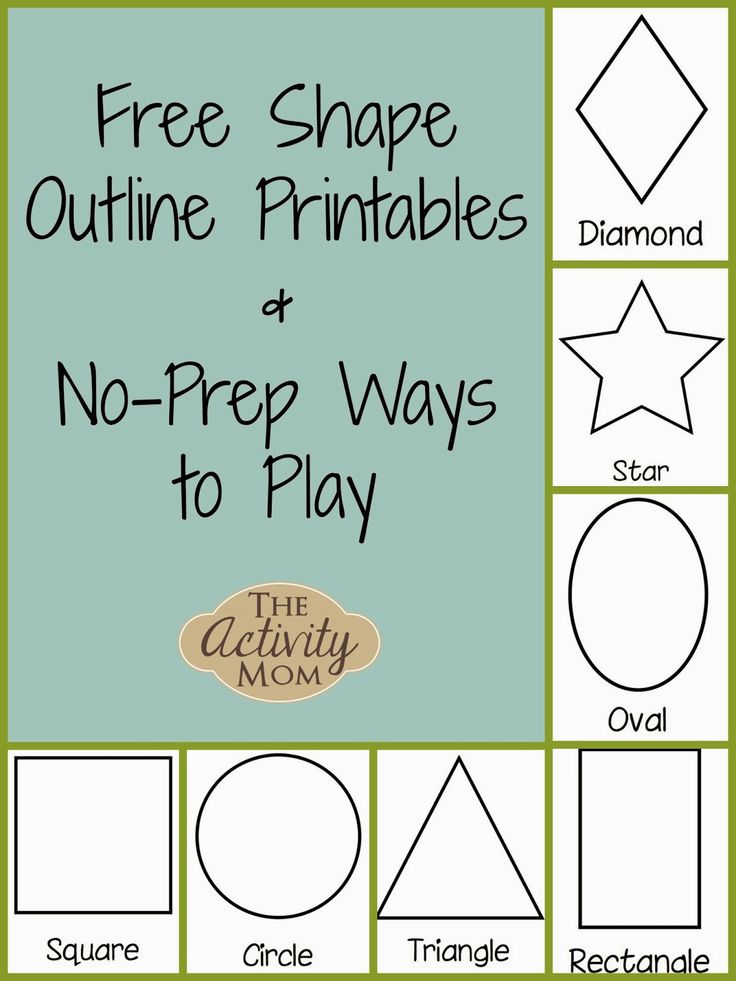 When students have completed their artwork, you will have a fun classroom display!
When students have completed their artwork, you will have a fun classroom display!
Learn more: Raising the Spenglers
8. Marshmallow Geometry
Marshmallow geometry is an engaging and fun activity for teaching children shapes. They will learn the names of 2D shapes as well as their characteristics. All you need is pretzel sticks, miniature marshmallows, markers, and card stock or construction paper.
Learn more: Playdough to Plato
9. 2D Shape Poems
Children love these shape poems! These poems are free and allow students to be introduced to a variety of key shapes. Leave these displayed in your classroom for students to see on a daily basis.
Learn more: Miss Kindergarten
10. Clip Shapes
These free shape printables are a fun activity for shape identification for preschoolers and toddlers. They will learn to be successful at shape-matching while they strengthen their fine motor skills.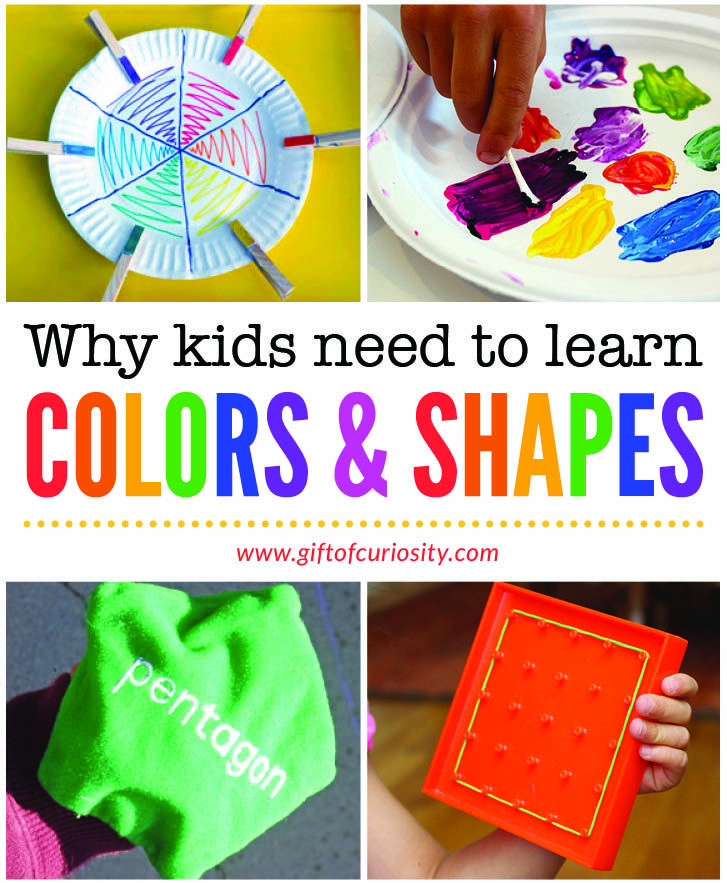
Learn more: Modern Preschool
11. Ice Tray Shape Sorting
Purchase wooden circles, a plastic ice tray, and shape stickers or colored paper cut in shapes. If you use colored paper, you will also need glue to attach the shapes to the wooden circles. Children will place the wooden circles in the correct spot on the tray.
Learn more: Mess for Less
12. Shape Monsters Craft
The shapes monsters craft is so much fun for kids! They will learn about shapes and colors as they create their very own monsters. The only supplies you need are construction paper, glue, and scissors.
Learn more: Live Well Play Together
13. Circle Collage
Teach children about the circle shape. You will need colored paper, scissors, and glue to complete this activity. Have the child cut out a large circle and many small circles. The child will then glue the smaller circles on the larger circle.
Learn more: Family Education
14. 20 Fun Shape Books
Using stories about shapes is a terrific way to teach kids all about shapes! They can learn about shape names with these books. This resource will help you find the perfect shape book to use with your child today!
Learn more: 123 Homeschool 4 Me
15. Basic Shapes Workbook
Using shape workbooks is a wonderful way to teach your children all about shapes. This workbook is created for preschoolers and offers shape guides, tracing, patterns, matching, activities, and much more. Buy yours today!
Learn more: Libro World
16. DIY Shape Puzzle
This simple shape puzzle is a DIY activity that is so easy to make. Your little one will enjoy playing with it over and over again as they learn all about basic shapes and their characteristics.
Learn more: Laughing Kids Learn
17. Preschool Shape Scavenger Hunt
Preschoolers will love this shape activity, and it is so easy and inexpensive to create. Just draw some shapes on pieces of paper and have your child find real-life objects to match the shapes.
Just draw some shapes on pieces of paper and have your child find real-life objects to match the shapes.
Learn more: Frugal Fun 4 Boys
18. Learn Shapes with Sticks
You and your child can venture out in nature and have your child pick up a few small sticks to create simple craft stick shapes. They will have a blast in nature as well as create these basic shapes.
Learn more: Toddler in Action
19. Shape Sensory Bottles
The little learners will have lots of sensory shape fun with this activity! These sensory bottles are super easy to make, and little ones can twist, flip, or shake the bottles to find the basic shapes. These bottles are perfect for center time or quiet time!
Learn more: Pocket of Preschool
20. Shape Clouds
Little ones will enjoy making clouds out of shapes. This activity is simple to create; all you need is a shape printable, glue, and cotton balls.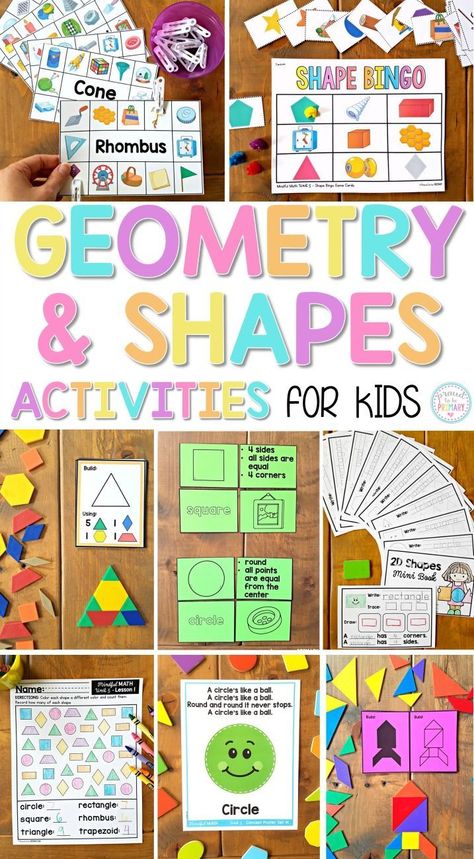 Let your little one create clouds of different shapes and have a blast doing so.
Let your little one create clouds of different shapes and have a blast doing so.
Learn more: Planning Playtime
21. Spaghetti Noodle Shapes
This free resource provides 10 shapes printables that will help your child strengthen motor skills while learning all about shapes. Your child will use cooked spaghetti noodles to outline the shapes. They will have a tremendous amount of fun completing this activity!
Learn more: Schooltime Snippets
22. Bubble Wrap Painting - Learning Shapes
Kids will love this bubble wrap painting activity, and they will learn about shapes. They will have a blast popping the bubbles and painting different shape patterns. Your child will also develop fine motor skills as well as improve hand and eye coordination.
Learn more: Learning 4 Kids
23. Sticky Shape Rainbow Activity
Purchase a large tub of foam sticker shapes, so your child can create a shape rainbow.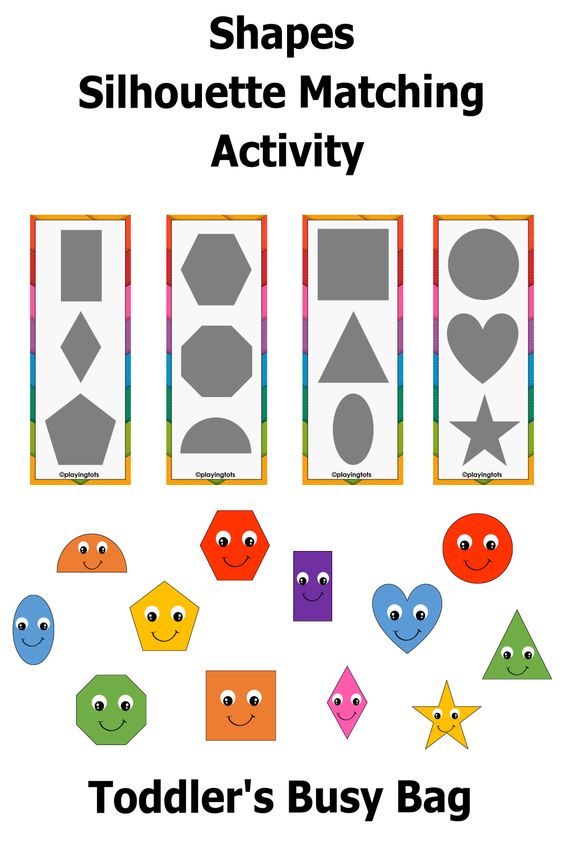 Draw the outline of a rainbow and put one shape of each color in a certain place on the rainbow outline and then allow your child to fill in the rest.
Draw the outline of a rainbow and put one shape of each color in a certain place on the rainbow outline and then allow your child to fill in the rest.
Learn more: Fun Learning for Kids
24. Magazine Shape Hunt and Sort
Are you searching for an engaging activity that will increase your child's fine motor skills and hand-eye coordination? If so, this is the perfect activity. It will also teach your child about shapes and encourage the use of critical thinking skills.
Learn more: Fun Learning for Kids
25. Preschool Pipe Cleaner Shapes Activity
This video will explain the preschool pipe cleaner shapes activity. This fabulous activity is perfect for 2-4-year-old children. It increases fine motor skills as well as hand-eye coordination. Your child will also learn about shapes, colors, and counting.
Learn more: Zaneta The Work At Home Mama
26. Build a Robot
Your child will learn about shapes while creating a cool robot! This engaging activity also develops cognitive skills and fine motor skills. Cut out the shapes and glue the robot together.
Cut out the shapes and glue the robot together.
Learn more: Fun House Toys
27. Magic Disappearing Shapes
Draw a variety of basic shapes on a coffee filter. Name a shape and have your child drip water over the correct shape. The shape will disappear, and you can move to the next shape. This activity is also terrific for fine motor practice!
Learn more: Gift of Curiosity
Abstract of the lesson on FEMP in the middle group "Geometric shapes and their properties" | Plan-summary of a lesson in mathematics (middle group):
Summary of a lesson in FEMP in the middle group
"Geometric shapes and their properties."
Type of lesson: repetition
Purpose: to consolidate children's knowledge of geometric shapes based on verbal description and visual perception
Tasks:
1. To consolidate the spatial relationship, skill
recognize geometric shapes, compare them by color, shape and size, designate them with symbols.

2. Fix the count within 10, the ability to compare the figure with the number of objects and use numbers to indicate the order of objects
3. Develop thinking, attention, memory, speech, form self-control skills
, cultivate the ability to work in a team
4. To consolidate the ability to use symbols to indicate the properties of objects, the ability to use tables
Basic didactic methods:
- practical
- game
Private methods and techniques:
Demonstration of a sample to establish patterns in the arrangement of figures, questions, children performing tasks with demonstration and handouts, control and evaluation, comparison of geometric shapes , game exercises “Which figure is superfluous?”, “House”
Material:
Visual material for the educator: Seven-color flower, geometric figures of different sizes, colors and shapes, cards with the designation of properties, numbers from 0-10, a rope for physical education minutes
Visual material for children: geometric shapes of different sizes and forms
Plan:
- Organizational start of class
- Introductory part
- Riddles about geometric shapes
- Grouping of figures in groups, in size 9004
- .
 geometric figures from a rope
geometric figures from a rope - designation of the properties of objects using symbols
- Final part
- Organizational completion of the lesson
Class progress;
Greeting game "our smart heads" (with movements)
Our smart heads
Will think a lot, deftly
Ears will listen
Mouth will speak clearly
Hands will clap,
Feet will stomp.
The backs are straightened,
We smile at each other
The children and the teacher stand in a circle. A balloon flies into the group, on which a seven-flower flower is fixed.
- Guys, look, a balloon flew into our group, and there is a flower and a note on it, so something is written in it, do you want to know what?
Then listen: “Hello dear guys! The girl Zhenya from the fairy tale "Flower-Semitsvetik" is addressing you, my friend had a problem, and in order to help him, you need to complete the tasks that are written on the petals of the flower.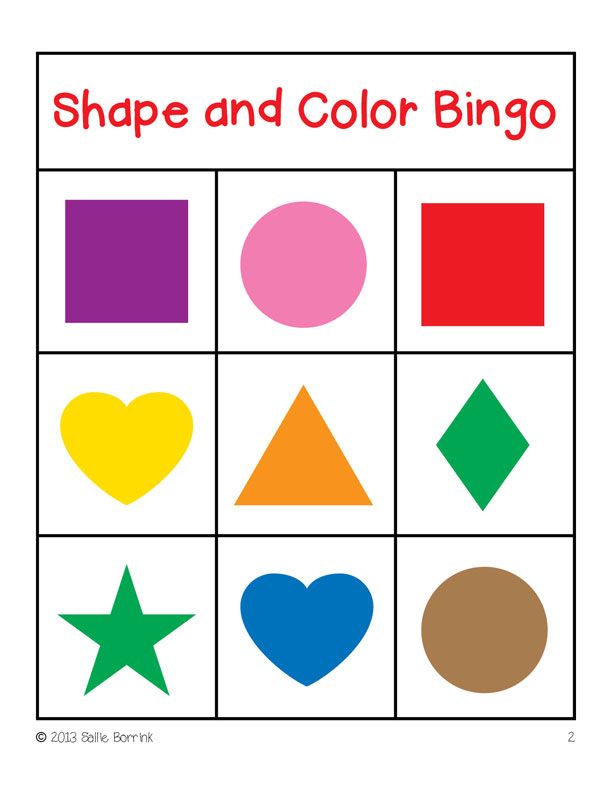 I was told that you are very smart and kind guys and will definitely help me. After you complete all the tasks, write me a letter how you coped with the tasks and send it to me. I'll be waiting, goodbye!"
I was told that you are very smart and kind guys and will definitely help me. After you complete all the tasks, write me a letter how you coped with the tasks and send it to me. I'll be waiting, goodbye!"
Do you guys think we can help Zhenya and her friend? Of course, I was sure that you would agree to help. Then let's get to the assignments. Children sit on chairs.
I tear off the first petal and there the task is
Guys, you need to solve riddles about geometric shapes. Attention first riddle
He has been my acquaintance for a long time,
Every angle in him is right.
All four sides Equal length.
(square)
He is a square brother,
Every angle is right.
Two sides of the same length,
And two more sides A little shorter, but equal.
(rectangle)
You look at me, you look at him Look at all of us.
We have everything, we only have three.
Three sides and three corners,
And the same number of vertices.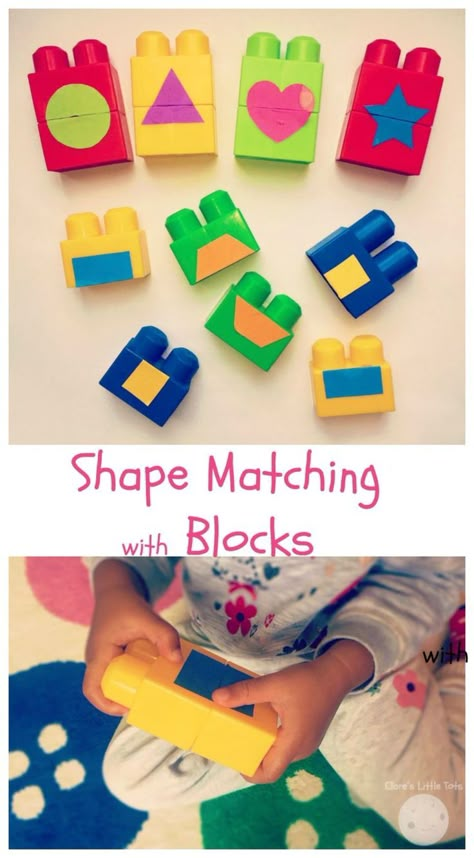
(triangle)
Round like the sun - but warm.
Round like a ball but does not bounce.
(circle)
I, geometric figure,
I have 4 sides and 4 corners Who am I? (square, rectangle)
These riddles were easy, so you quickly and correctly guessed them.
The figures are placed on the easel
- Well done, now let's tear off the next petal. The task will be difficult, in order to complete it correctly, you need to listen to me carefully.
- How do the figures on the flannelgraph differ? (they are of different sizes, there are big and small, they are different in color)
These figures should be divided into two groups. What groups can they be divided into?
A child comes up and arranges the figures into groups - by color, size
The girl Zhenya did not forget about the rest, she invites us to relax and at the same time
remember geometric shapes. Stand in a circle (Modeling geometric shapes from a rope).
This is a magical rope, remember what you can do with it. What figure do you want to make now. (circle, triangle, square).
You can give each child a rope. Figures to do sitting at the table.
Children make geometric shapes with rope.
The next task.
Didactic game "What's gone"
Q: Guys, Zhenya wants to know if you can beat attentive and patient. To do this, she offers you a game. Close your eyes, and when you open them, not with words, but with drawings lying on your table, show what is gone. Whoever is the most attentive and patient gets a token.
Q: What figure is gone?
Count and Do Dynamic Pause
How many triangles are in the green herringbone,
How many bends do you have immediately. (3)
How many oval patties are on the plate,
Perform the same number of jumps immediately. (5)
Rectangular how many glasses for guests,
Do as many squats as soon as possible. (4)
How many round vases are on the shelf.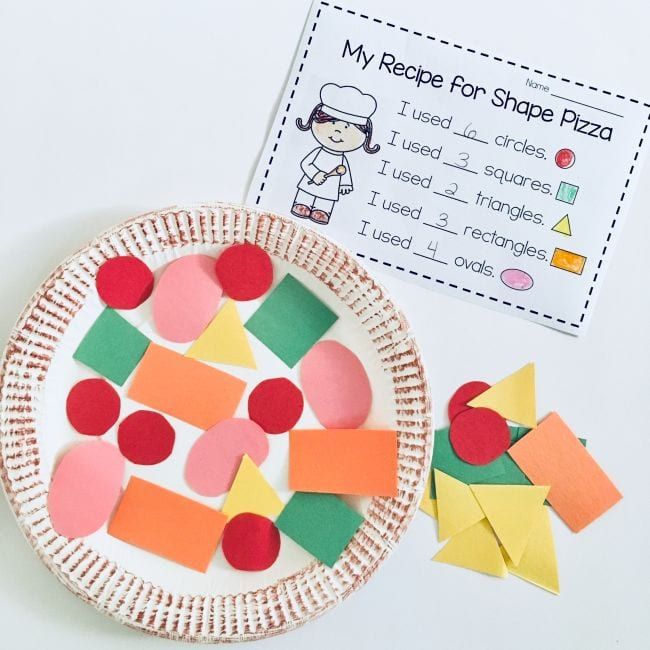
Clap your hands so many times. (1)
How many square flags have been hung for us,
How many turns do now. (2)
Value, digits
Next task. Zhenya also wants to know if you can navigate on a sheet of paper. And the figures lying on the table will help you navigate. The teacher distributes square sheets and figures.
Place the circle in the center of the sheet.
Put the triangle in the upper right corner.
Place a rectangle in the bottom left corner.
Place a square in the bottom right corner.
Place the oval in the upper left corner.
Q: Where did you put the oval? - to get the right answer from the child.
The teacher invites the children to stand in a circle. In the center of the circle, a figure is laid out, for example, a circle. (The teacher throws the ball to one of the children and asks: what is round? Etc. The child calls and throws the ball back) or Gymnastics for the eyes “Find an object similar in shape”
Find with your eyes an object similar in shape to a triangle (circle , square, oval, rectangle).
Cutting with scissors "Geometric shapes"
How to make triangles with scissors?
How to make squares with scissors?
How to make two semicircles from a circle?
Thinking
Outdoor game "Find your pair"
The teacher offers the children to take one geometric figure. After that, the children can run, jump, dance, and at the signal “Find your mate”, pair up with someone who has the same geometric figure in their hands. Those children who are the first to pair up win.
Then the children change pieces and the game is repeated.
Total.
Why is it easier to make a circle than a triangle?
We played, and now the next petal comes off, and there is a task. Each of you has a set of geometric shapes and a house on which you need to decompose them. Count how many floors are in the house.
Let's remember what the floors of the house are called - rows. What figures live on the first floor (rectangles), second (circles), third (squares), fourth (triangles).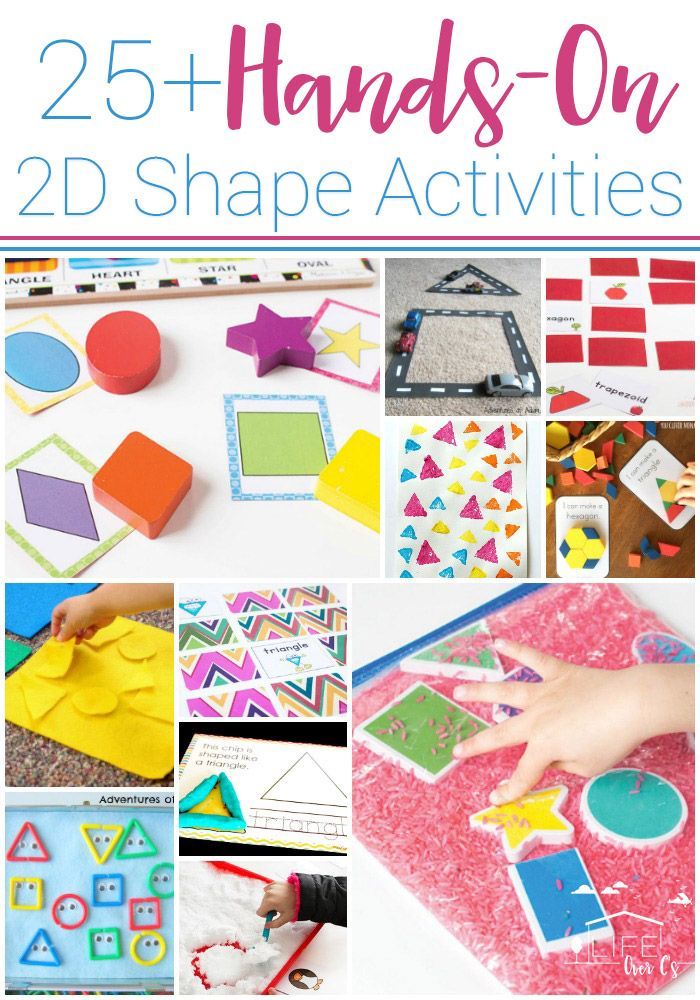 Well done. How many apartments are on each floor? What color figures live in them? (There are three apartments on each floor. Red figures live in the first apartments, yellow figures in the second, and green figures in the third.
Well done. How many apartments are on each floor? What color figures live in them? (There are three apartments on each floor. Red figures live in the first apartments, yellow figures in the second, and green figures in the third.
- How many columns? (Three)
Well done. We already know that the properties of objects are denoted by symbols. You will have to tell about the figure, what kind of figure, what size, color it is. (The child goes to the easel, chooses a geometric figure, talks about it with the help of cards)
For example: (see Figure 2)
- We also coped with this task. And here's the next one. I will lay out three symbol cards on the easel, and you must choose the desired figure from. set of geometric shapes. With the help of symbols, you need to tell everything about the figure. For example: (see Figure 3) -Now let's have a little rest. There are numbers on the table, you each need to take any one number and line up in direct order as soon as the music ends.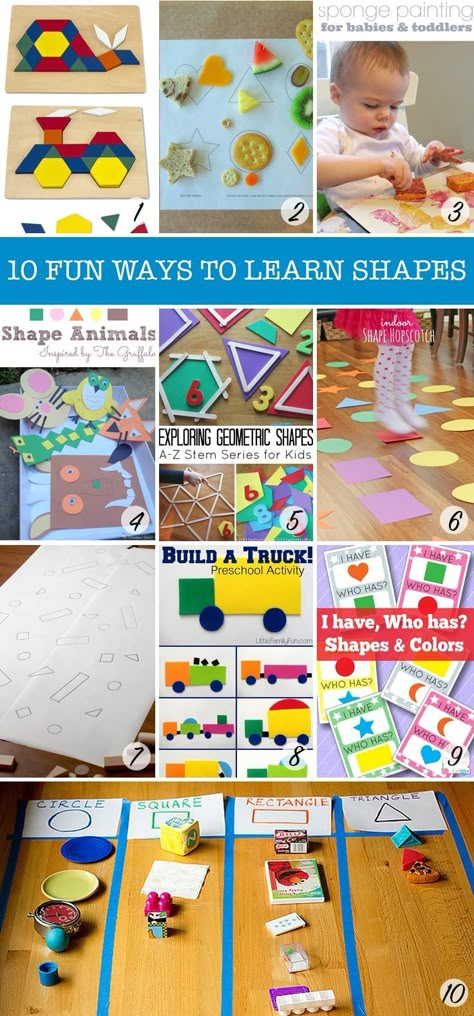
That's all the petals of our flower are over, so we coped with the tasks, and in the evening we will write a letter to Zhenya and send it to her. What did you like most about the lesson? You all did a great job today, I am very pleased with you.
Exercise "Geometric trees"
In front of you are trees with crowns that look like geometric shapes. Count how many trees are in the picture? Five trees.
Show a tree with a round crown (oval, triangle, rectangle, square).
Which tree has a round crown (oval, triangular, rectangular, square)?
Sitting at the table
In front of the children in the box are various geometric shapes: squares, isosceles triangles, small rectangles. Have the children make a square. Children can make a square from any shapes. After they complete the task, once again specify which figure everyone has made.
The game can be made more difficult by offering to make the next square larger or smaller than the first one.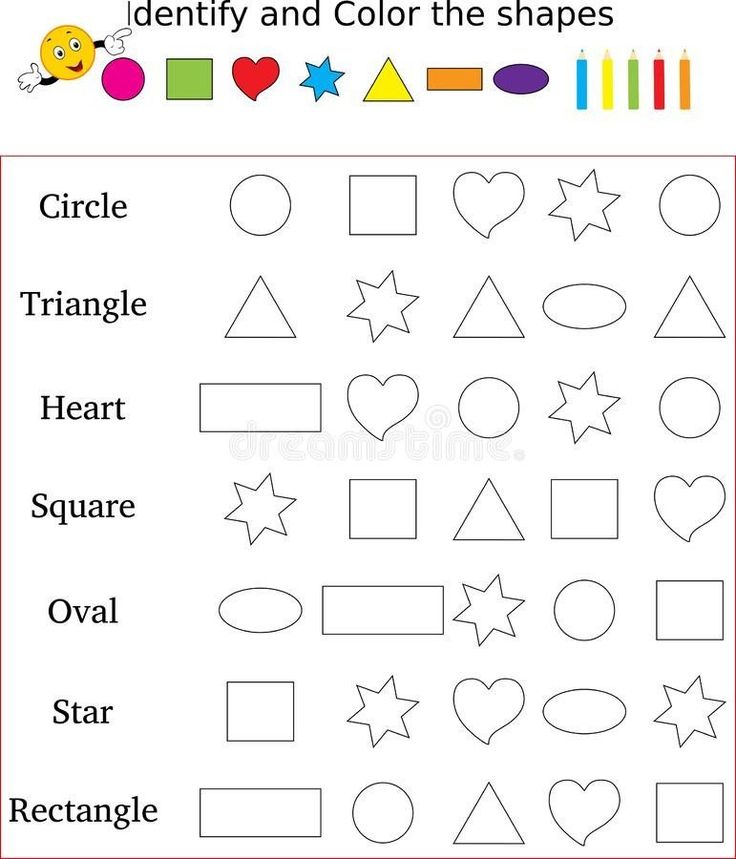
Do not focus on what shapes should be made into a square.
For those children who can easily cope with a similar task, complicate it: let them assemble a square from other figures at a time.
Let's play
The teacher conducts games in class.
Exercise "Geometric swing"
- Geometric figures ride on a swing. On the left side of the swing, sit three circles to ride. And on the right side, plant ovals, one less than circles. What can be done to make circles and ovals equal? Add one oval or remove one circle.
Fine motor skills, eye measurement
Catch a fish exercise
- Draw a dot in the middle of each fish with a pencil and connect this dot to the hooks.
Didactic game "Who is extra at the table?"
- What geometric figure do you think is superfluous at the rounded table? What do you think, what figure is superfluous at the polygonal table?
Number independence
Geometric flags exercise
- Which square flags are more blue or red? They are equal.
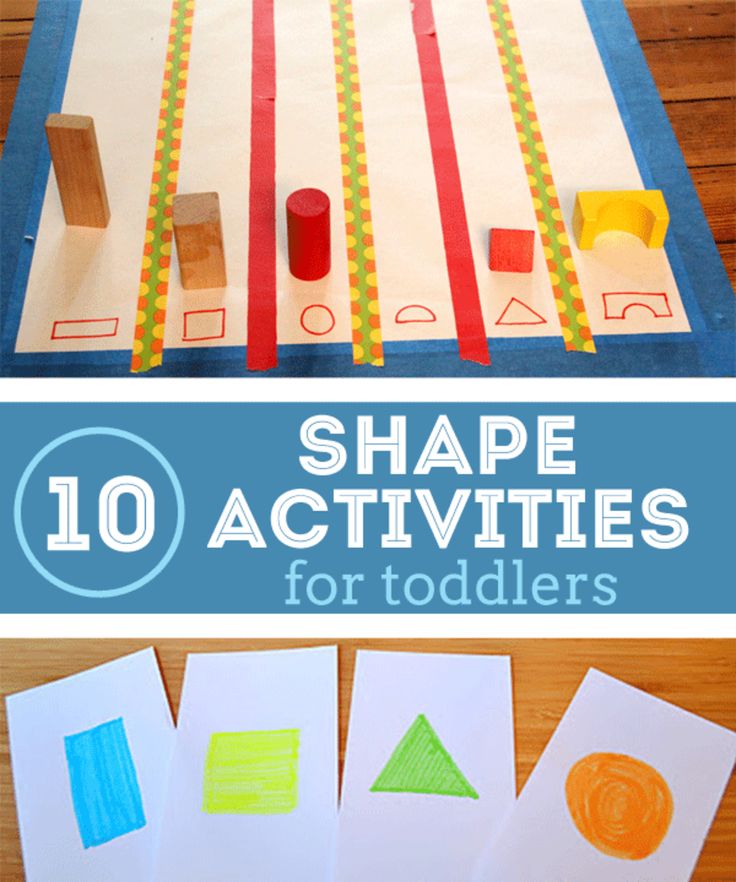 This means that the number of flags does not depend on their color.
This means that the number of flags does not depend on their color.
Which rectangular flags are larger, small or large? They are equal. So the quantity does not depend on the magnitude.
Which triangular flags are more, those that are lined up in a circle, or those that are lined up in a row? They are the same number. So the number does not depend on the location.
Comparison of sets
Orientation in space
Exercise "Arrange geometric shapes on a sheet"
- Now turn the sheets of paper on the back clean side and prepare cardboard geometric shapes for work.
Place a square in the upper right corner.
Put the circle in the middle of the sheet.
Place the triangle in the lower left corner.
Place the oval in the upper left corner.
Place the triangle in the lower right corner.
Geometric houses exercise
- Consider the houses of a geometric country.
What do you think, in which house does which geometric figure live?
Whose house is the highest (lowest)?
Whose house is the widest (narrowest)?
To whose house does the longest (shortest) path lead? Show on the fan the number indicating the number of floors in a square house (rectangular, triangular).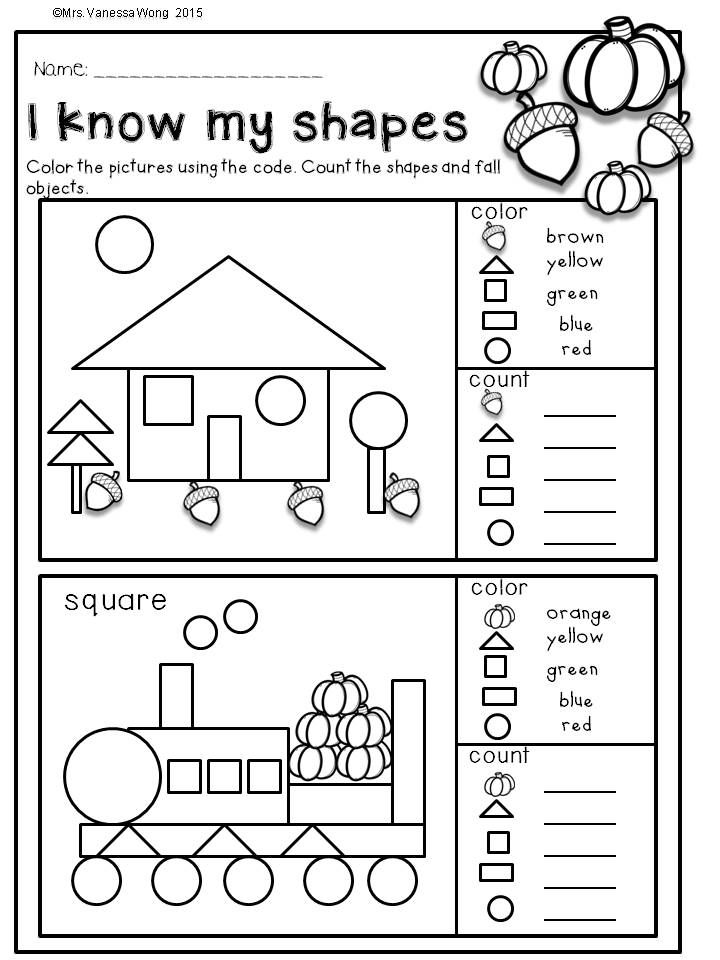
Guys Dunno sent a letter in which he asks you a lot of questions. It also asks you to solve riddles.
- Make a picture out of the geometric shapes you have and stick it on a piece of paper. This picture will remind you of a trip to the country of geometric shapes.
- Take this coloring book home. (A picture with an image composed of geometric shapes with a given color for coloring each shape).
Educator. One day they decided a circle, a square and a triangle and an oval to go for a walk. The prankster oval ran away from his friends and hid in the garden (the teacher puts a “garden” poster in front of the children on which there are images of vegetables). Friends looked around, there was no oval, they began to look for it. They search, they search, they can't find it. Children, help the figures find the oval. To do this, select vegetables that resemble an oval in shape - (children choose cucumber, eggplant, zucchini ...) Among the vegetables, friends found an oval.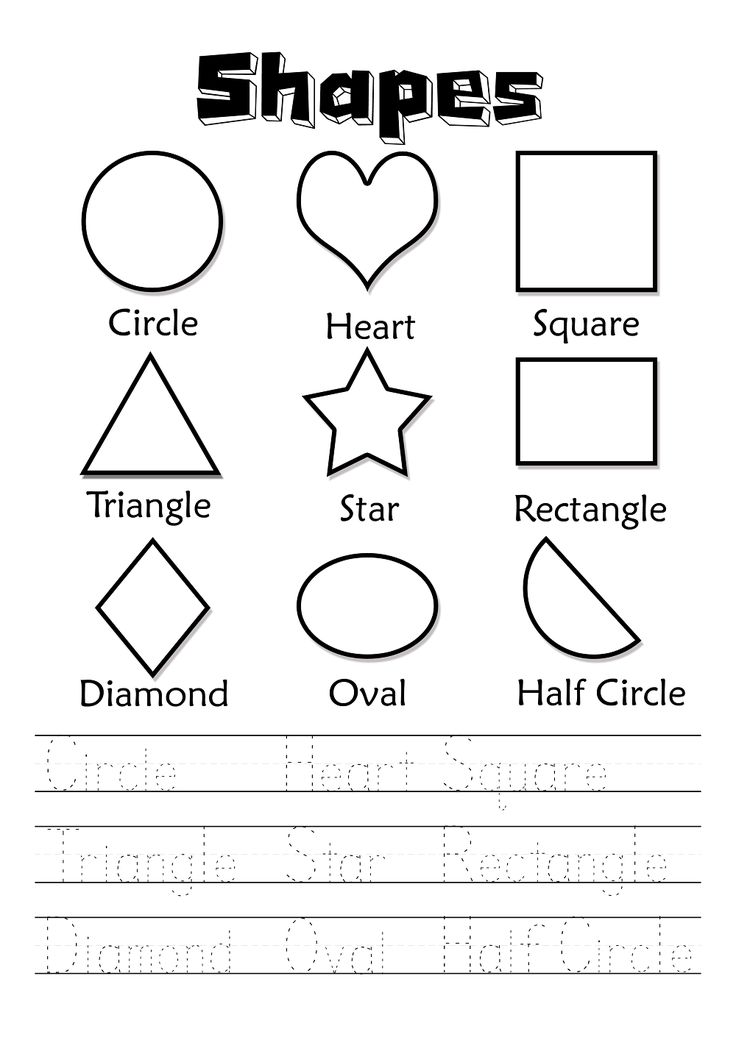 They went further. After some time, a dense forest stood in their way. Animals came out from behind the trees. Guess what?
They went further. After some time, a dense forest stood in their way. Animals came out from behind the trees. Guess what?
The teacher rearranges the geometric figures on another flannelgraph, on which there is a “forest” (trees, mushrooms, etc.), shows cards with a schematic representation of animals. Children name them and list the geometric shapes that make up the images.
Educator (addressing the children): Seryozha, what geometric figures do you see in the image of a fox? ... a bear? ... a hare?
Educator. Krug, Oval, Square Triangle got acquainted with forest inhabitants and decided to make their portraits as a keepsake.
Children sit down at the tables and use the pattern-samples and sets of geometric shapes to lay out pictures of animals.
Educator. Check with each other if your animals are similar to those shown in the pictures.
Educator. The circle, square, triangle and oval said goodbye to the forest inhabitants and went for a walk in the forest (children walk through the music hall to quiet music).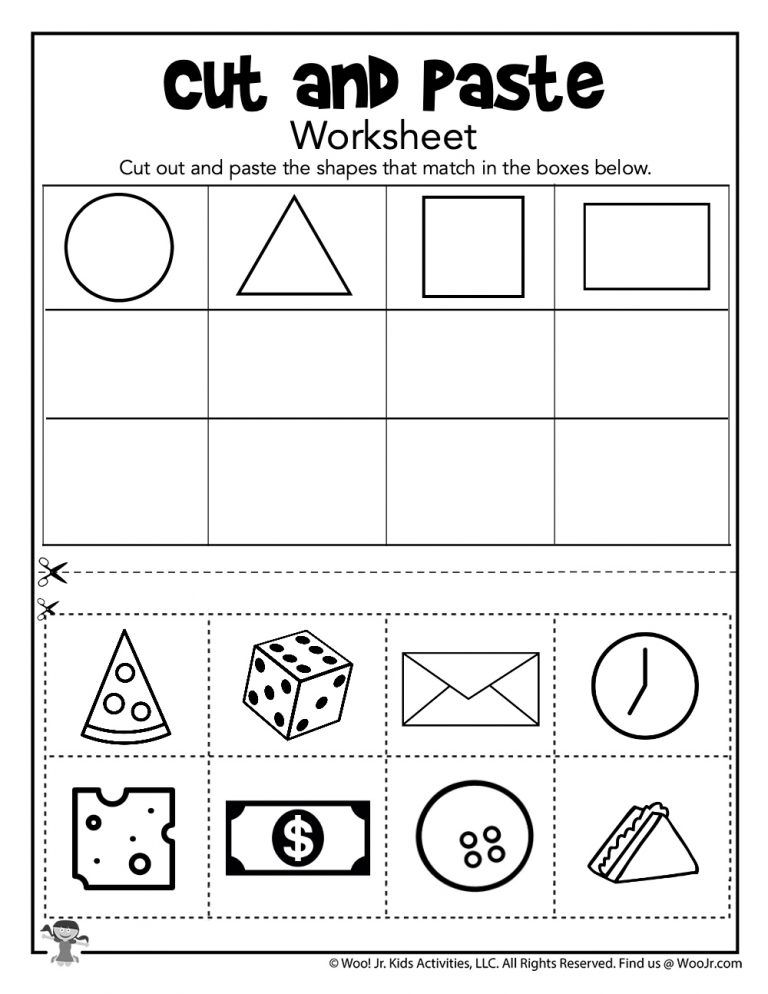 Whether they walked for a long time, shortly, but now it's time to return home (the children sit on chairs, the teacher puts the geom. figures in their original place near the house).
Whether they walked for a long time, shortly, but now it's time to return home (the children sit on chairs, the teacher puts the geom. figures in their original place near the house).
Learning geometric shapes: games for preschool children
One of the important aspects of the development of mathematical concepts in preschoolers is the study of the basics of geometry. In the course of acquaintance with geometric shapes, the child acquires new knowledge about the properties of objects (shape) and develops logical thinking. In this article, we will talk about how to help a preschooler remember geometric shapes, how to properly organize games for teaching geometry, and what materials and aids can be used to develop a child’s mathematical abilities.
At what age can one start learning geometric shapes?
Many parents are wondering if young children need to get acquainted with geometric shapes. Experts believe that it is optimal to start classes in a playful, relaxed form from the age of 1.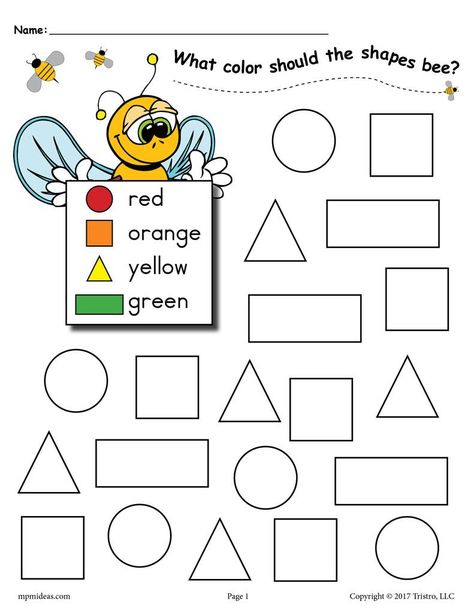 5. Until this age, it is appropriate to pronounce to the child the names of the shapes of objects that the baby meets in real life (for example, “round plate”, “square table”).
5. Until this age, it is appropriate to pronounce to the child the names of the shapes of objects that the baby meets in real life (for example, “round plate”, “square table”).
Introducing the child to geometric shapes, be guided by his reaction. If your baby started to show interest in them at an early age (by playing with the sorter or looking at pictures), encourage his curiosity.
At 2 years old, the baby should be able to distinguish:
- Circle;
- Square;
- Triangle.
By the age of 3 you can add:
- Oval;
- Rhombus;
- Rectangle.
At an older age, a child can memorize such figures as a trapezoid, a pentagon, a hexagon, a star, a semicircle. Also, children visiting the Constellation Montessori Center get acquainted with geometric bodies with interest.
How can I help my child remember geometric shapes?
Teaching a child geometric shapes should take place in stages..jpg) You need to start new figures only after the baby remembers the previous ones. The circle is the simplest shape. Show your child round objects, feel them, let the baby run his finger over them. You can also make an application from circles, mold a circle from plasticine. The more sensations associated with the concept being studied, the child receives, the better the baby will remember it.
You need to start new figures only after the baby remembers the previous ones. The circle is the simplest shape. Show your child round objects, feel them, let the baby run his finger over them. You can also make an application from circles, mold a circle from plasticine. The more sensations associated with the concept being studied, the child receives, the better the baby will remember it.
To get acquainted with the forms, you can use three-dimensional figures. It can be made by a designer, a sorter, lacing, frame inserts. Since at an early age the visual-effective type of thinking is most developed, various actions with figures will help to remember them better.
How children of different ages perceive geometric figures
The operations that a child can perform with geometric figures and how he perceives shapes depend on the age of the baby. In accordance with age characteristics, the following stages of training can be distinguished:
- In the second year of life, the baby is able to visually recognize familiar figures and sort objects according to shape.
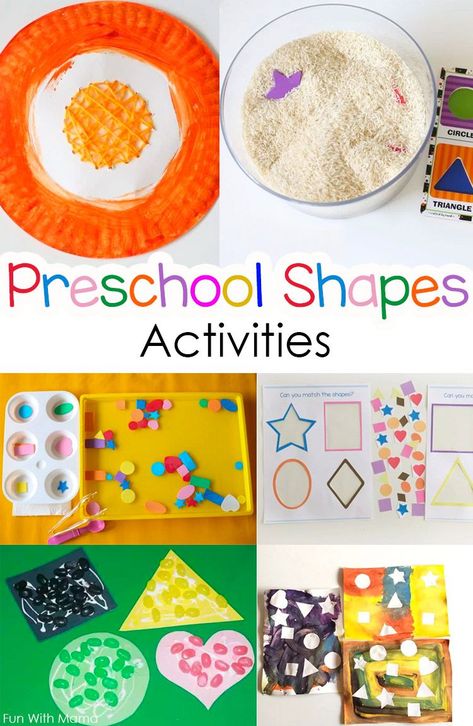
- At 2 years old, a child can find the desired shape among a number of other geometric shapes.
- By the age of 3, babies can name shapes.
- At the age of 4, a child is able to correlate three-dimensional figures with a flat image.
- At the senior preschool age (and sometimes even earlier) it is possible to start studying geometric bodies (ball, cube, pyramid). Also at this age, the child can analyze complex pictures consisting of many shapes.
Regardless of the child's age, try to pay attention to the shapes of surrounding objects and compare them with known geometric shapes. This can be done at home and on the go.
Games for learning geometric shapes
For a child to be interested, learning geometric shapes should take place in a playful way. You should also select bright and colorful materials for classes (you can buy them in a store or do it yourself). Here are some examples of games and tutorials for learning geometric shapes:
- Sorting.
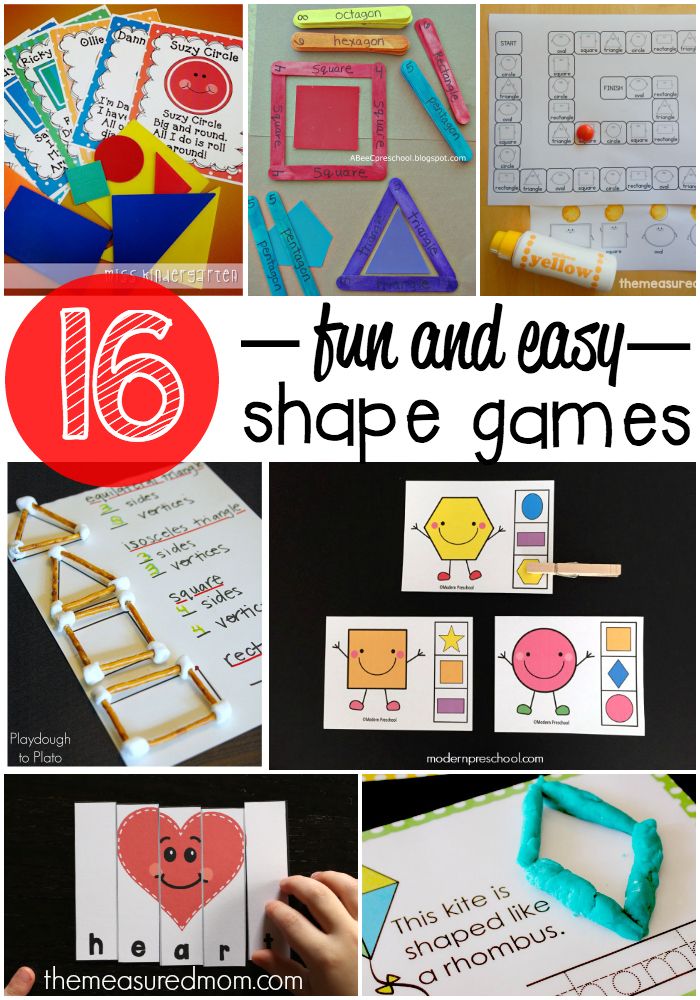 Games with a sorter can be started from the age of 1. Invite the child to find its window for the figure. So the child will not only memorize geometric shapes, but also develop fine motor skills, thinking and spatial representations, because in order for the part to fall into the hole, you need to turn it at the right angle. You can also sort any other items, such as building blocks, Gyenesch blocks, or counting material.
Games with a sorter can be started from the age of 1. Invite the child to find its window for the figure. So the child will not only memorize geometric shapes, but also develop fine motor skills, thinking and spatial representations, because in order for the part to fall into the hole, you need to turn it at the right angle. You can also sort any other items, such as building blocks, Gyenesch blocks, or counting material. - Insert frames. In fact, this manual is similar to a sorter. For each geometric figure, you need to find its place.
- Geometric lotto. To play, you will need a field with the image of geometric shapes and handout cards with each figure separately. A child can take small cards out of a chest or bag, and then look for their place on the playing field. This game also perfectly trains the attention of the baby.
- Geometric appliqué. Cut out various geometric shapes from paper and, together with your child, make a picture out of them (for example, you can make a Christmas tree from triangles, a house from a square and a triangle).
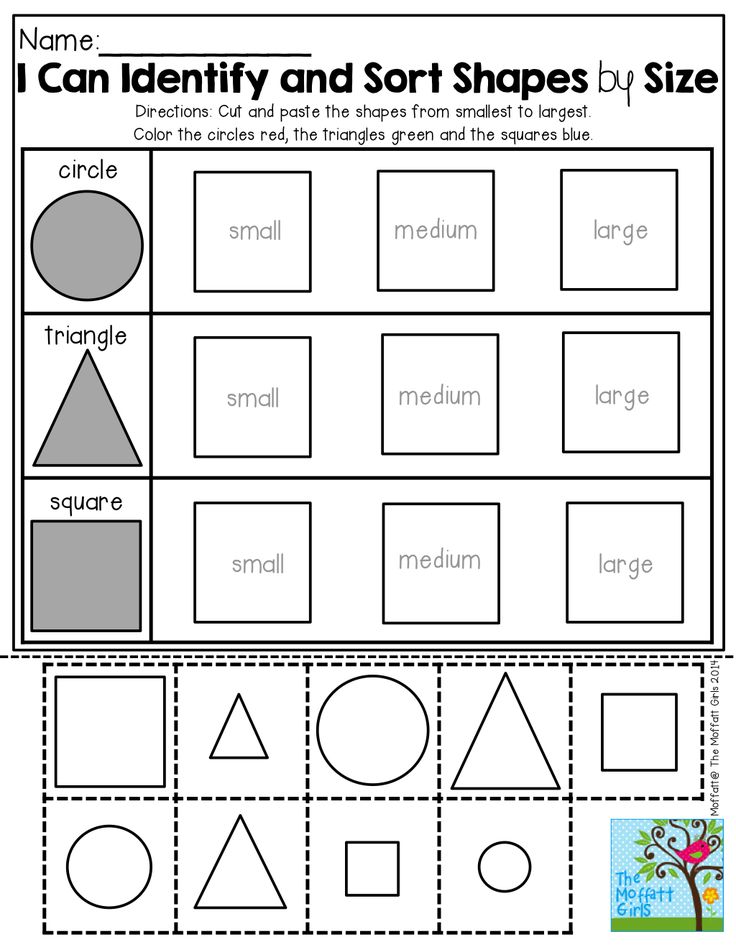
- Drawing (including stencils).
- Modeling.
- Laying out figures from counting sticks.
- Geometric mosaic.
- Laces with geometric shapes.
- Games with cards.
- Guess by touch.
- Active games. Draw geometric shapes on the pavement with chalk. Ask the child to imagine that the figures are houses that you need to run into on a signal. Next, you name a geometric figure, and the child runs to it.
In addition, educational cartoons can be used to study geometric shapes. Here is one of them:
Conclusions
Learning the basics of geometry at preschool age is an important part of developing a child's mathematical and sensory representations. Acquaintance with the figures should occur gradually (first, simple figures - a circle, a square, a triangle).

